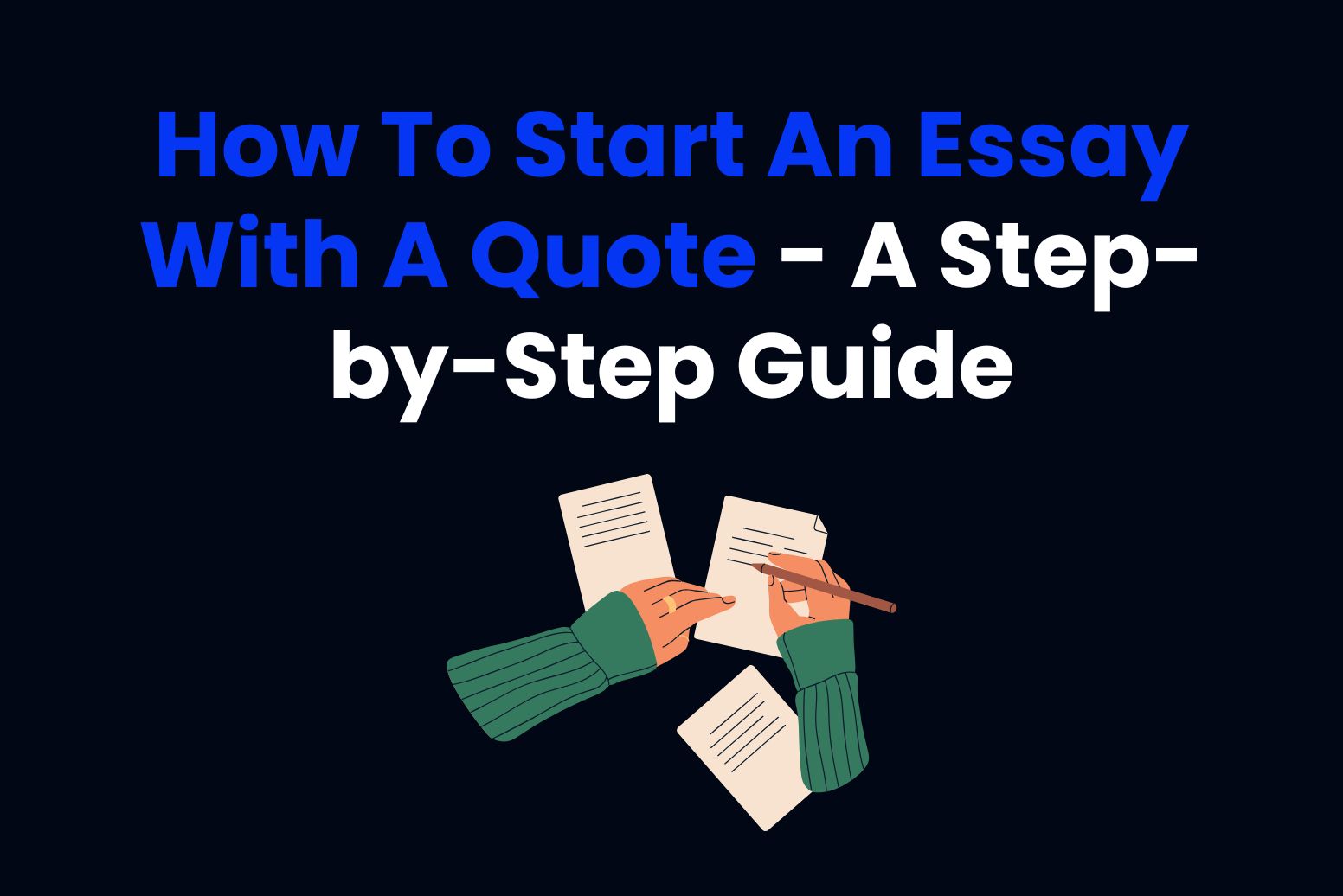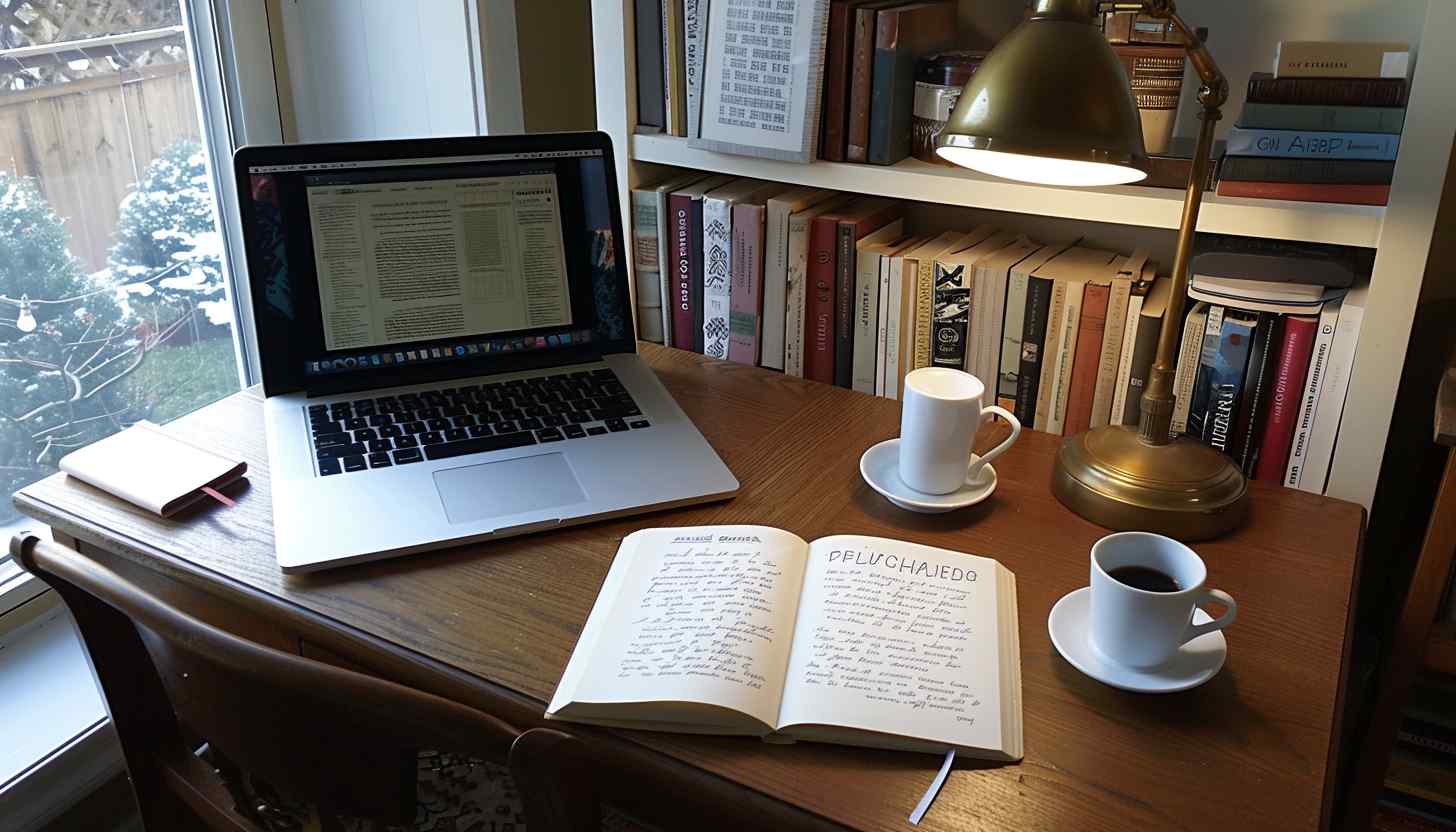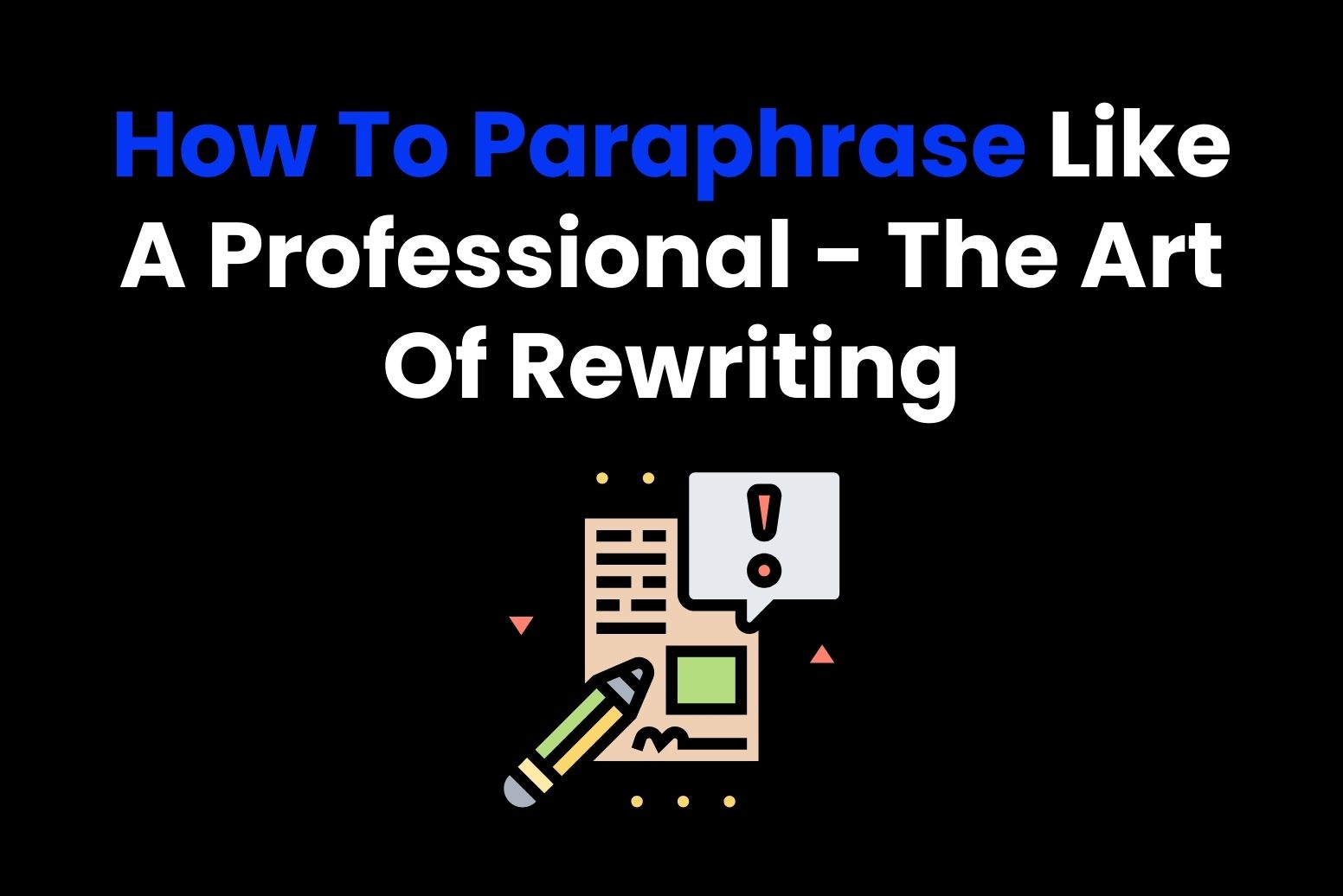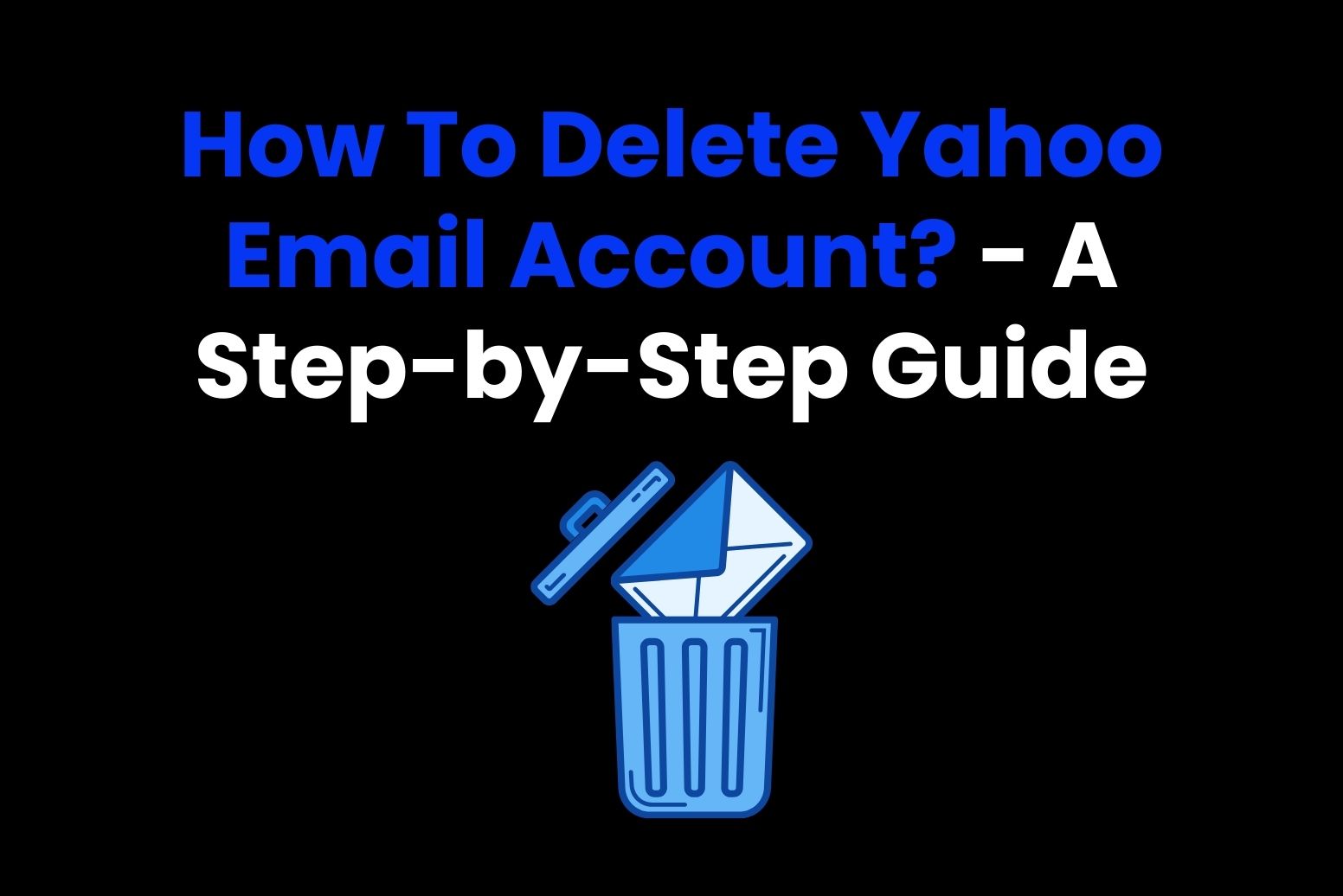Do you know what writing an essay and cleaning a toddler’s room have in common? You know it has to be done but you do not know where to begin. Here’s an idea: start your essay with a quote. Great idea, right? If you’re wondering how to start an essay with a quote, we’ve got you covered!
Here’s the thing: not all quotes are created equal. You can’t just toss a random one in there and call it a day. You want to pick the right quote and weave it in so smoothly that your reader doesn’t even realize they’ve just read something someone else said. Sounds tricky, right? Well, it’s not. And we’re here to show you how to start an essay with a quote without sounding like you’re trying too hard. So, let’s roll up our sleeves and dive in!

Why Starting An Essay With A Quote Works
You’ve probably heard the saying, “First impressions matter.” Well, your essay’s opening sentence is no different. When you start an essay with a quote, it can instantly engage the reader and set the stage for everything that follows.
Quotes give your writing authority. They connect your essay to a bigger conversation, showing your reader that you’re well-versed in the topic. Additionally, a carefully chosen quote can make your argument feel more grounded. Plus, quotes can spark curiosity, making readers want to dive deeper into what you have to say.
But how do you make sure the quote actually works for your essay? We’ll get into how to start an essay with a quote shortly, so stay tuned!
How To Choose the Right Quote For Your Essay
Alright, so you’ve decided that you want to learn how to start your essay with a quote. Great choice! But here’s the tricky part: how will you choose the right quote for your essay? It’s not just about finding any quote that sounds cool or fits the word count. The quote you pick has to work with your essay. It should make sense, tie into your main point, and even help set the tone for what’s to come. Here’s a step-by-step guide to help you choose a quote for your essay wisely:
Make Sure It’s Relevant
Think of the quote as your first impression. You want it to connect directly to your topic or your argument. If your essay is about overcoming obstacles, don’t pick a quote about happiness unless you can make it fit naturally. The goal is to make the quote feel like a natural extension of your essay’s theme.
For example, if you’re writing about leadership, a quote from someone like Nelson Mandela or Winston Churchill could set the perfect tone. But if you’re writing about the challenges of leadership, maybe a quote from a more modern, relatable figure would hit home better.
Check The Credibility Of The Source
This might sound basic, but trust me, it’s important! The strength of your essay depends on the weight of the quotes you use. So, always aim for quotes from credible sources. Whether it’s from a well-known thinker, a famous writer, or a respected expert in your field, these quotes add authority to your writing.
Imagine starting your essay with a quote from a reputable historian when writing about the Civil War. It adds depth, doesn’t it? On the other hand, quoting a random person from Twitter might make your essay lose some credibility, even if their words are clever.
Match The Tone
Now, this is crucial: the tone of the quote should vibe with the tone of your essay. You don’t want to start an upbeat, casual essay with a heavy, dramatic quote, and vice versa.
For instance, if you’re writing an essay on the importance of having a positive mindset, starting with a quote like “The only way to do great work is to love what you do” (Steve Jobs) will fit right in. But if your essay is about the serious consequences of stress, you might want a more somber, reflective quote.
The key is to make sure that the tone doesn’t jar the reader. If it does, it’ll feel like you’re trying to force something into your essay, and that’ll break the flow.

How To Start An Essay With A Quote (Without It Being Awkward)
So, you’ve found the perfect quote? Awesome! But now comes the tricky part: how to start an essay with a quote without making it feel like you’re trying too hard? Dropping a quote at the start of an essay can feel awkward if it’s just floating there with no setup or connection.
You want it to feel seamless, like it belongs there, not like you’re just stuffing it in for the sake of looking smart. Here’s a step-by-step guide on how to start an essay with a quote:
Introduce the Quote (Don’t Just Drop It In)
Imagine you’re at a party. You wouldn’t just walk up to someone and blurt out, “Life is what happens when you’re busy making other plans,” and walk away, right? (Awkward!) You’d add some context, like, “You know, John Lennon once said…” or “This reminds me of something I read recently…”
The same rule applies to essays. Before you write your quote, warm up the reader with a little intro. Explain who said it, why they said it, or how it ties into the big picture.
Example:
Instead of starting cold with:
“The only way to do great work is to love what you do.”
Try:
“As Steve Jobs once said, ‘The only way to do great work is to love what you do.’ For him, this wasn’t just a philosophy but it was the driving force behind Apple’s success.”
See how much smoother that feels? The reader gets context, and the quote immediately feels purposeful.
Tie the Quote to Your Thesis (Make It Work for You)
Okay, so you’ve introduced the quote. But why is it there? A quote without a follow-up is like a joke without a punchline because it leaves people confused. After dropping the quote, explain how it connects to your essay’s main argument or theme. Show the reader why it matters.
Example:
Let’s say your essay is about the importance of taking risks. If you start with Jobs’ quote about loving your work, you might follow up with:
“This idea of finding passion in what you do is exactly what drives people to take risks, innovate, and achieve greatness. In this essay, we’ll explore how risk-taking is at the heart of every success story.”
Now, the quote doesn’t just stand there but it does something.
Transition Smoothly Into Your Point (Keep It Flowing)
Think of the quote as the opening act, and your writing as the main event. Once you’ve introduced it and tied it to your thesis, it’s time to take over. Transition from the quote into your main idea so it all flows together like one cohesive thought.
Example:
If you’re writing about creativity, you could start with Picasso’s famous line:
“‘Every child is an artist. The problem is how to remain an artist once we grow up.’ This quote perfectly captures the challenge of holding onto creativity in a world that often stifles it. In this essay, we’ll dive into how education, society, and even our own self-doubt play a role in shaping (or crushing) creativity.”
Notice how it moves from the quote into the essay’s focus without feeling clunky or forced? That’s the magic of a smooth transition!
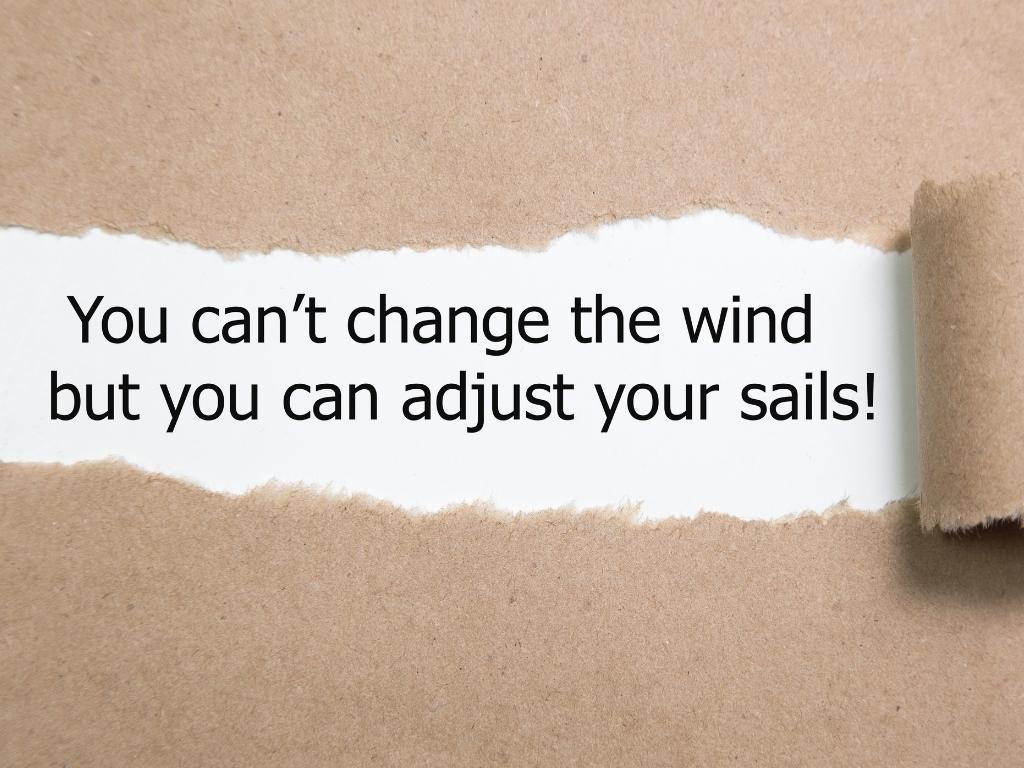
Match The Tone Of The Quote To Your Essay
This is a biggie. The tone of your quote has to match the vibe of your essay. If your essay is casual and lighthearted, a heavy, philosophical quote might feel out of place. On the other hand if you’re writing something serious and reflective, a funny quote might come off as irrelevant.
Example:
If you’re writing an essay about resilience, a dramatic, emotional quote like:
“‘It’s not the load that breaks you down, it’s the way you carry it.’”
…might hit harder than something playful or sarcastic.
But if you’re writing a fun, creative piece about problem-solving, a quirky quote like:
“‘If you think you are too small to make a difference, try sleeping with a mosquito.’”
…might be just what you need to grab attention.
The key to how to start an essay with a quote? Pick a quote that feels like it belongs in your essay’s world.
Avoid Cliches (Please, No Overused Quotes)
We’ve all heard “Be the change you want to see in the world” about a thousand times. While it’s a great quote, it’s so overused that it’s lost a bit of its impact. If you can, dig a little deeper to find something fresh. Bonus points if you can surprise your reader with a quote they haven’t seen a million times before.
Tip:
Instead of the usual suspects, explore quotes from lesser-known thinkers, writers, or even pop culture. A line from a song, movie, or book could work just as well (as long as it’s relevant). You can use Arvin AI to help you search the best quote for your essay if you can’t find any.
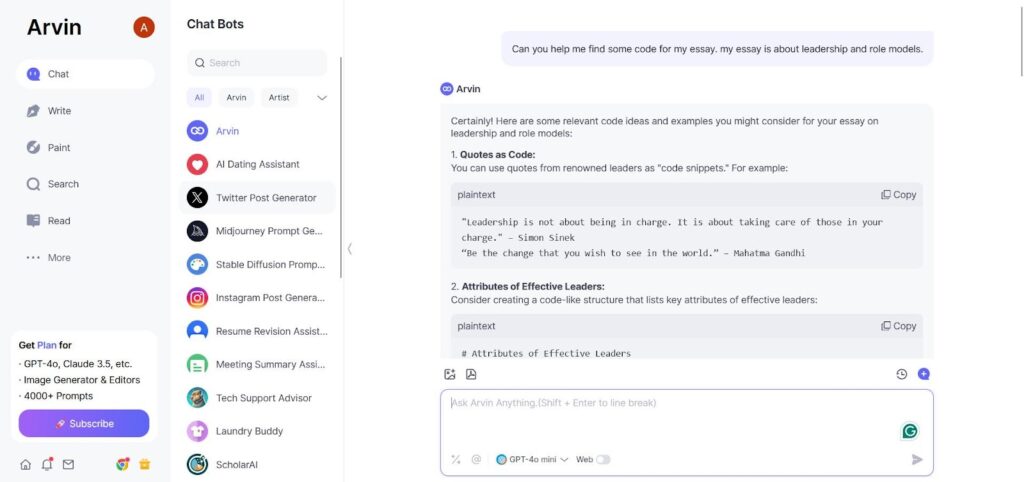
Pro Tip: You can also use Arvin AI to brainstorm college essay topic ideas that will get you good grades!
Different Ways On How To Start An Essay With A Quote (It’s Not Just One Way)
There’s no one-size-fits-all when it comes to how to start an essay with a quote. Sometimes, you want to ask a question. Other times, you might want to show a contrast. Here are a few approaches to try:
The Question-Quote Combo
Starting with a question immediately engages the reader because it’s interactive. A question makes them pause and think, sparking curiosity. Pairing it with a quote doubles its impact: you introduce a question, offer a hint at the answer, and make them want to keep reading to learn more.
Here’s why it works:
- Questions create intrigue
- The quote adds credibility and depth
- It sets up your thesis naturally
Example In Action:
Let’s say you’re writing an essay about leadership:
“What makes a great leader? Is it the ability to inspire others, or something deeper? As John Quincy Adams once said, ‘If your actions inspire others to dream more, learn more, do more, and become more, you are a leader.’”
From here, you could launch into an analysis of leadership qualities, using the quote as your essay’s foundation.
Pro Tips:
- Make sure your question ties into your thesis. A random or overly broad question won’t hold the reader’s attention.
- Avoid “yes or no” questions because they don’t leave much room for exploration. Instead, ask open-ended ones that beg for explanation.
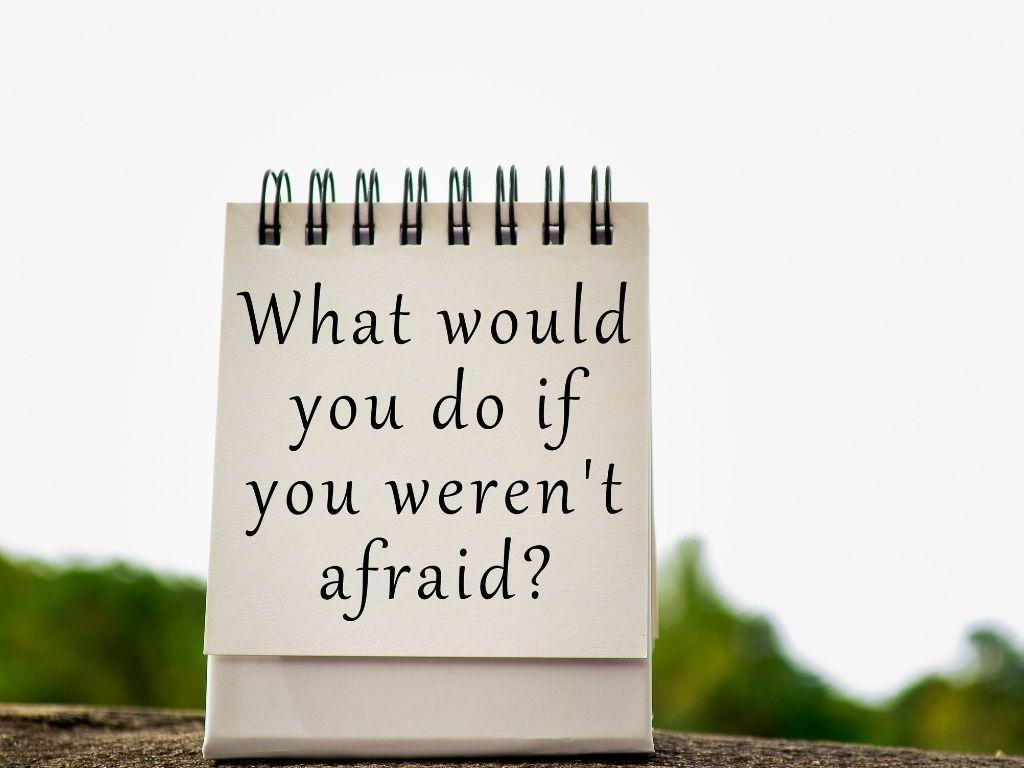
The Contrast Approach
Using a quote that contrasts with your argument is a brilliant way to create tension and curiosity. This technique works because readers love a little debate as it makes them want to see how you’ll resolve the contradiction.
Here’s why it works:
- It challenges the reader’s assumptions.
- The contrast makes your perspective stand out.
- It hooks readers who love intellectual engagement.
Example In Action:
Imagine you’re writing about the value of failure. You could begin with:
“Some people see failure as the end of the road. But as J.K. Rowling famously said, ‘It is impossible to live without failing at something, unless you live so cautiously that you might as well not have lived at all.’”
You’ve just created a sense of conflict between societal views on failure and Rowling’s wisdom. Now, the reader is curious to see how you’ll argue your case.
Pro Tips:
- Choose quotes that directly challenge common beliefs because it creates more drama.
- Use this approach sparingly in essays where you want to come across as agreeable.
The Personal Reflection
Adding a personal touch is a powerful way to connect with your reader. People love stories, especially ones they can relate to. Starting with a brief reflection and tying it to a quote makes your essay feel approachable, even if it’s tackling a heavy topic.
Here’s why it works:
- It humanizes your writing.
- It makes complex ideas more relatable.
- Readers feel like they’re having a conversation with you.
Example In Action:
If your essay is about creativity, you might begin with:
“I’ve always believed the best ideas come when you least expect them. Like that time I solved a huge problem while daydreaming during my morning coffee. Albert Einstein said it best: ‘Creativity is intelligence having fun.’”
You’ve just made the topic relatable while setting the stage for a deeper discussion.
Pro Tips:
- Keep the reflection short and sweet but don’t overshadow the quote.
- Make sure the personal story supports your essay’s focus.

The Storytelling Approach
Storytelling is one of the oldest ways to capture attention. It works because humans are wired to love stories but they’re engaging, easy to follow, and memorable. Starting with a brief narrative and connecting it to a meaningful quote draws the reader in emotionally and intellectually.
Here’s why it works:
- Stories create emotional engagement.
- They provide a concrete example to anchor your ideas.
- They make abstract concepts feel tangible.
Example In Action:
Let’s say you’re writing an essay about diversity. You might start like this:
“I’ll never forget my first day at a new school. It felt like everyone already knew each other, and I was the outsider. But then I remembered something Maya Angelou once said, ‘We all should know that diversity makes for a rich tapestry, and we must understand that all the threads of the tapestry are equal in value.’”
The reader is immediately drawn into your personal experience and feels compelled to keep reading to see how the story connects to the broader theme.
Pro Tips:
- Use vivid details to make the story come alive.
- Make sure the story sets the tone for the rest of the essay.

Bonus Method
For an extra layer of intrigue, start with a quote that seems unrelated at first but makes sense after a bit of explanation. This approach works because it surprises the reader and keeps them guessing.
Example In Action:
“‘It always seems impossible until it’s done,’ said Nelson Mandela. At first glance, this may seem unrelated to learning how to code. But isn’t every programmer tackling their first line of code facing something that feels impossible?”
Pro Tips:
- Choose a quote that challenges the reader to think in new ways.
- Make the connection between the quote and your topic clear quickly to avoid confusion.
Mistakes To Avoid How To Start An Essay With A Quote
Okay, now that you know how to start an essay with a quote, let’s talk about what not to do. Here are a few common mistakes to watch out for:
- Using Overused Quotes: You know the ones. “The only thing we have to fear is fear itself.” It’s been said a thousand times. Find something fresh!
- Forcing the Quote: If the quote doesn’t fit, don’t force it. Your essay should flow naturally.
- Not Explaining the Quote: Never assume the reader gets it. Explain what the quote means in the context of your essay.
- Overloading with Quotes: One or two quotes is enough. Don’t let them take over your essay.

FAQS About How To Start An Essay With A Quote
Here are a few of the most frequently asked questions about how to start an essay with a quote:
What are some good quotes to start an essay?
The best quotes to start an essay are those that align with your topic and engage your audience. Here are some examples:
- For essays on perseverance:
“It does not matter how slowly you go as long as you do not stop.” – Confucius
- For essays on education:
“Education is the most powerful weapon which you can use to change the world.” – Nelson Mandela
- For essays on leadership:
“The greatest leader is not necessarily the one who does the greatest things. They are the one that gets the people to do the greatest things.” – Ronald Reagan
- For essays on change:
“Be the change that you wish to see in the world.” – Mahatma Gandhi
Can I use more than one quote?
While it’s possible to use multiple quotes, moderation is key. Overloading your introduction with quotes can confuse readers and weaken your voice. Use one powerful quote in the introduction to set the tone and save additional quotes for the essay’s body. If using multiple quotes, ensure each one has a unique purpose and avoid repeating the same idea.
How to begin an essay with a quote example?
To start an essay with a quote; you can introduce a relevant and impactful quote that aligns with your essay’s theme or argument.
For instance if writing about leadership, you might begin with: “Leadership is not about being in charge. It’s about taking care of those in your charge.” – Simon Sinek.
How do you start the beginning of a quote?
To begin a quote, you can use a signal phrase that introduces the speaker or author, followed by the quotation itself. Common phrases include “According to,” “In the words of,” or “As Author puts it.”
For example: “As Albert Einstein once said, ‘Imagination is more important than knowledge.'”
In this case, “As Albert Einstein once said” serves as the introduction to the quote.
Take Home Message
Starting an essay with a quote is one of the best ways to grab attention and set the right tone. In this article, we’ve talked about why using a quote works so well, how to pick the perfect one, and the steps to tie it into your essay. Writing can sometimes feel overwhelming, especially when you’re staring at a blank page.That’s where Arvin AI can help. Whether you need help finding the right quote, structuring your essay, or polishing your writing, Arvin AI can help. No more looking for a good essay expander! Now it’s your turn. Use what you’ve learned here to start your next essay with a quote that pulls your readers in and sets you apart.

